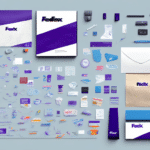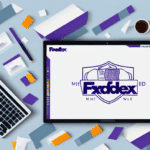Maximizing Your Shipping Efficiency with FedEx Ship Manager’s Additional References
FedEx Ship Manager is an essential tool widely used by businesses to streamline their shipping operations. One of its standout features is the ability to set additional references for labels. In this article, we delve deep into the significance of additional references, provide a comprehensive step-by-step guide on setting them up, and offer best practices and troubleshooting tips to ensure a smooth shipping process.
The Importance of Additional References in FedEx Ship Manager
Additional references in FedEx Ship Manager serve as a critical component for businesses aiming to enhance their shipping accuracy and organization. These references allow users to include extra information on shipping labels, such as order numbers, SKUs, or specific product identifiers. This added layer of information facilitates easier tracking and identification of packages, which is paramount for businesses managing high shipping volumes.
According to a Forbes report, businesses that implement detailed tracking systems see a 20% improvement in shipping efficiency and a 15% reduction in delivery errors. By leveraging additional references, companies can achieve similar enhancements in their shipping processes.
Furthermore, incorporating additional references improves customer service. Detailed labels allow businesses to swiftly address customer inquiries and resolve issues by easily locating specific shipments using the provided reference information.
Step-by-Step Guide to Setting Additional References in FedEx Ship Manager
1. Access Your FedEx Ship Manager Account
Begin by logging into your FedEx Ship Manager account. Ensure you have the necessary permissions to modify shipping settings.
2. Initiate a New Shipment
Select the 'Create a Shipment' option to start the shipping process. Enter all required shipment details, including the recipient's address, package dimensions, and weight.
3. Navigate to Additional References
Within the 'Shipment Details' section, scroll down to find and click on 'Additional References.'
4. Enter Reference Information
Input the desired reference type and corresponding value. Common reference types include order number, PO number, or customer reference. Ensure the information entered is accurate and relevant to the shipment.
5. Finalize and Print the Label
After entering all necessary references, click 'OK' to add them to your shipment details. Proceed with completing the shipment creation process and print the label.
6. Customize Reference Fields (Optional)
FedEx Ship Manager allows for the creation of custom reference fields. To add a custom reference, click on 'Add Custom Reference' under the 'Additional References' section and enter the required information.
For more detailed instructions, refer to FedEx’s shipping management guide.
Common Issues and Troubleshooting When Setting Additional References
Incorrect Reference Types or Values
Entering incorrect reference types or values can lead to package misidentification or delivery delays. To prevent this, always double-check the information before finalizing the shipment. Refer to FedEx’s support resources for guidance on acceptable reference formats.
Missing Reference Information on Labels
If reference information does not appear on the printed label, it may be due to the selected label format not supporting additional references. To resolve this, choose a label format that includes reference fields or customize your label to incorporate them.
Unsupported Characters in References
Using unsupported characters or exceeding character limits can cause errors. Ensure that your reference information adheres to FedEx’s guidelines by avoiding special characters and keeping within the specified limits.
Best Practices for Utilizing Additional References in FedEx Ship Manager
Consistency is Key
Use consistent reference types and formats across all shipments. This uniformity aids in efficient tracking and reduces the likelihood of errors.
Avoid Sensitive Information
Do not include sensitive or confidential information in the reference fields to maintain data security and comply with privacy regulations.
Employee Training
Ensure that all employees involved in the shipping process are trained on the importance of additional references and how to accurately enter them. Proper training fosters consistency and minimizes mistakes.
Regularly Update Reference Information
Periodically review and update your reference information to ensure it remains relevant and accurate. Outdated references can lead to confusion and inefficiencies.
Leverage Reference Fields for Detailed Shipment Information
Use reference fields to include detailed information about the shipment, such as product contents, destination details, or special handling instructions. This additional information can enhance the accuracy and efficiency of the shipping process.
Advanced Tips and Customization for Additional References
Unique Reference Values
Assign unique reference values to differentiate between similar products or orders. Unique identifiers prevent confusion and streamline the tracking process.
Integration with Business Systems
Integrate reference information with your internal business systems, such as inventory management or CRM software. This integration facilitates seamless data flow and enhances overall operational efficiency.
Tracking Promotions and Campaigns
Utilize reference fields to track specific promotions or marketing campaigns. This approach allows you to assess the effectiveness of your campaigns and make informed decisions for future initiatives.
Customizing Additional References to Fit Your Business Needs
Personalizing Reference Fields
FedEx Ship Manager allows users to customize reference fields to align with their unique business requirements. Navigate to 'My Profile' and select 'Preferences' to add, remove, or rename reference types based on your specific needs.
Setting Required and Optional Fields
Determine which reference fields are mandatory and which are optional. Setting required fields ensures that critical information is always included, enhancing tracking and identification accuracy.
Custom References for Specific Business Operations
For businesses with specialized operations, custom references can include department codes, project numbers, or other specific identifiers. Tailoring references to your business operations enhances organization and efficiency.
API Integration for Advanced Customization
If you utilize FedEx Web Services, you can further customize reference fields through the API. This advanced customization allows for greater flexibility and integration with your existing systems.
Conclusion: Enhance Your Shipping Process with Additional References
Setting additional references in FedEx Ship Manager is a strategic move that can significantly enhance your shipping efficiency, accuracy, and customer satisfaction. By following the outlined steps, adhering to best practices, and utilizing advanced customization options, businesses can streamline their shipping operations and gain valuable insights into their logistics processes.
In today’s competitive market, leveraging every tool available to optimize operations is crucial. Implementing additional references is a simple yet impactful strategy that can lead to improved tracking, reduced errors, and enhanced customer service. Start maximizing your shipping efficiency with FedEx Ship Manager’s additional references today!




















